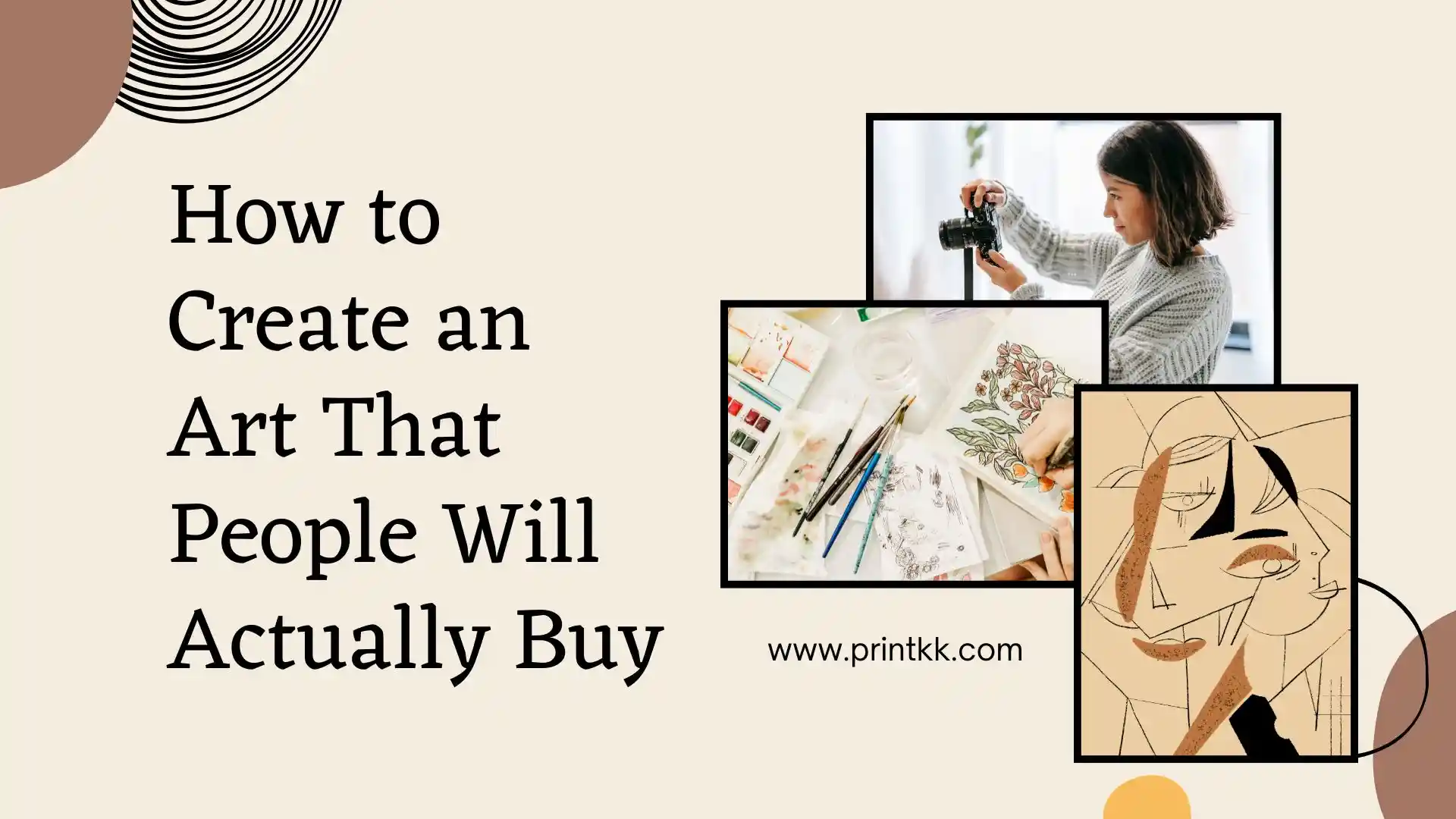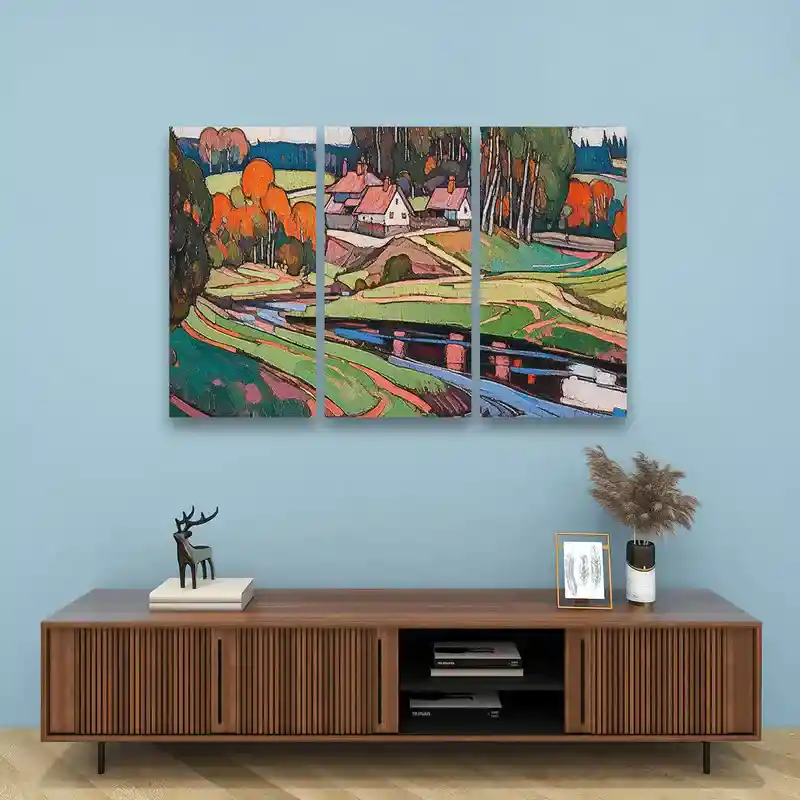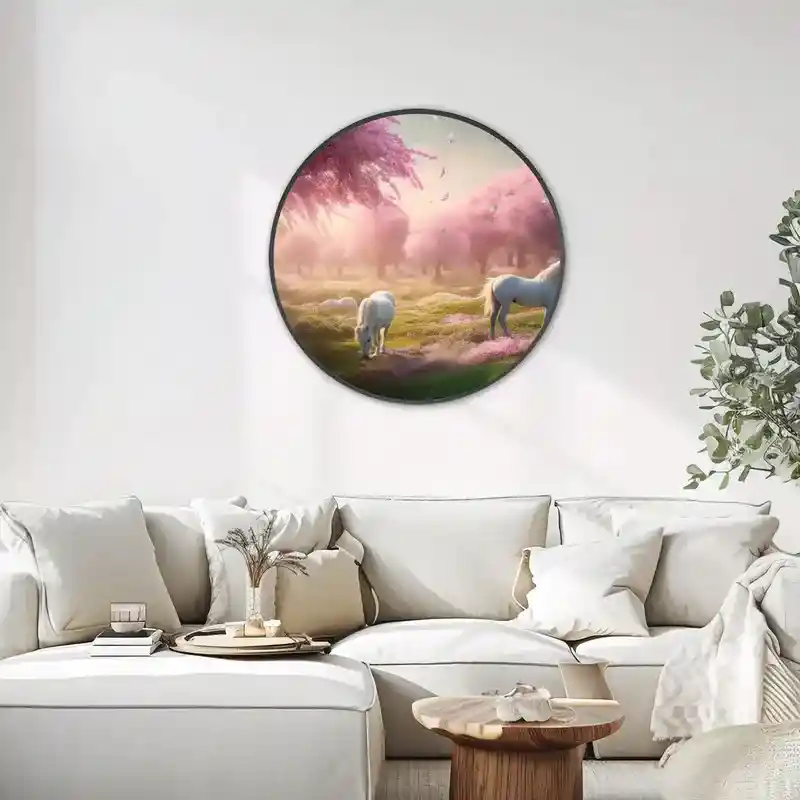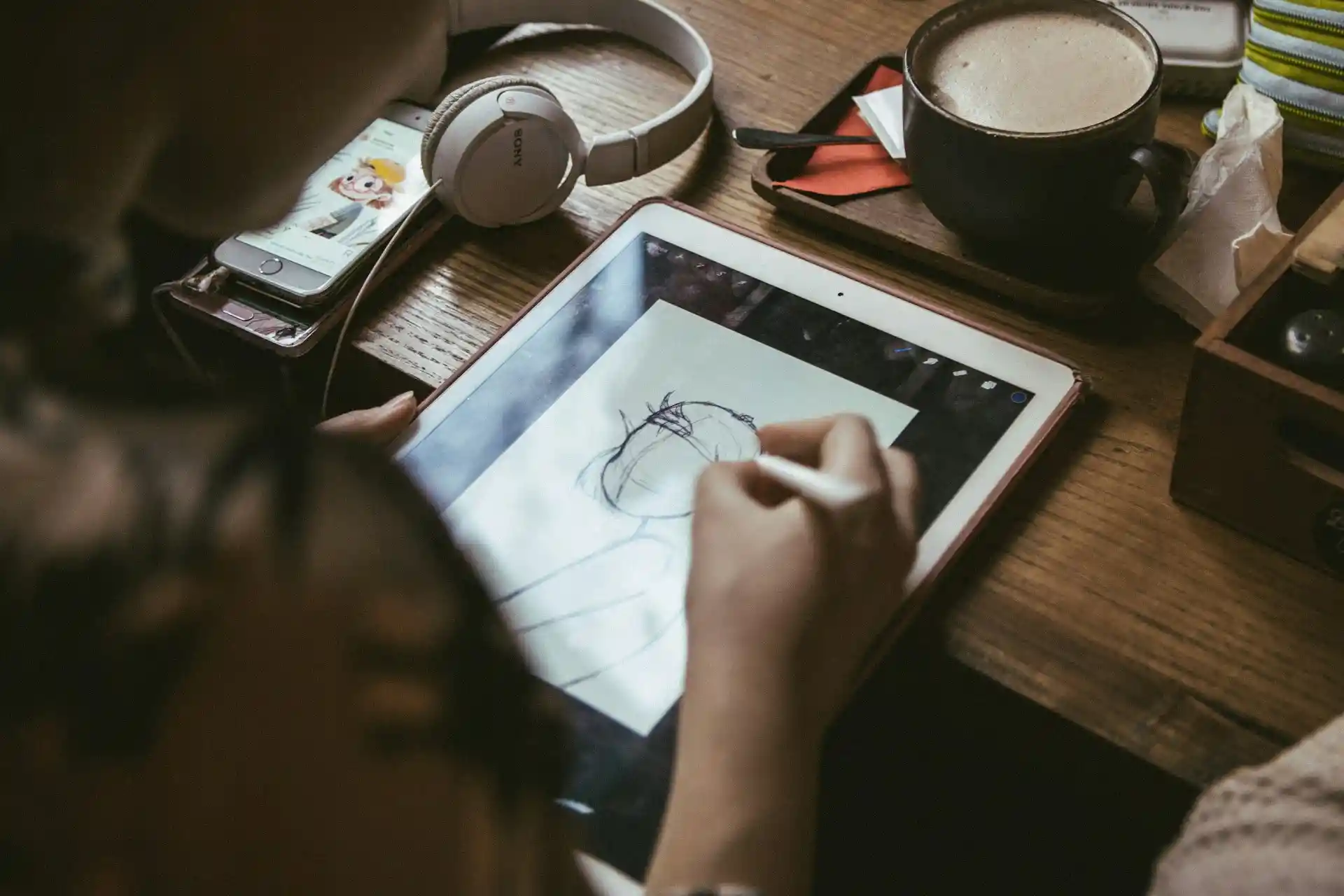
Creating art is one thing, but knowing how to create an art that people actually want to buy is a completely different challenge.
Many artists struggle not because they lack talent, but because they don't understand the steps that turn passion into marketable work.
In this guide, we'll explore practical strategies, from building strong drawing skills to finding your unique artistic voice, and even choosing the right medium for your creations.
How to Practice Drawing the Right Way
Start Small, Finish Often
The key to improving your drawing is to practice every day, even if it's just a small sketch. Smaller drawings are easier to finish, and completing them helps you learn faster.
Every time you try and fail, your brain picks up something new—even if you can't see the progress immediately. Aim to finish what you start.
Focus on Repetition, Not Perfection
You need to spend hours practicing before drawing feels natural. Think of it like learning an instrument. There's a long buildup before it starts to sound right.
Focus on doing it with your hand, not just knowing it in your head. Repeat the same thing over and over:
- Quick sketches of heads, eyes, or hands
- Copy parts of pictures but change other parts
- Try different poses or angles
Even 10 imperfect sketches teach more than one "perfect" piece.
Learn From Mistakes
Be ready to be bad at first. Almost every artist goes through a lot of ugly drawings. That's normal! Failure is part of the process.
Look at your sketches, see where you can improve, and focus on those areas the next day. Copying is helpful, but don't rely on it completely—mix it with your own ideas. That's how your skills grow.
Shift from Imitation to Creation: Finding Your Artistic Voice
If you find yourself good at copying art but blank when creating your own, it's time to change your approach.
Start by observing the world around you, not just online references or books. Take a walk, travel if you can, and carry a sketchbook or camera. Pay attention to the small details:
- The subtle colors of leaves and flowers
- How people move, dress, and interact
- The textures and shapes of buildings
When you notice these things, you are gathering the raw materials for your own art. No one else sees the world exactly like you do, and that is your advantage.
Let your personal experiences guide your creations. Maybe it's the first dark monsoon clouds, a sunset by the riverside, or a quiet moment on a mountain.
Capture what impresses your soul, not what looks "perfect." Sketch, paint, or experiment with colors, shapes, and textures to express your feelings.
Remember, your first attempts might not be masterpieces.
Practice is about gaining experience, observing deeply, and turning what you see and feel into something uniquely yours. Keep going—your artistic voice is waiting.

How to Create an Art That People Will Actually Buy
1. Understand Your Audience
Before you pick up your brush or tablet, think about who might buy your art. Are they young professionals decorating apartments?
Collectors looking for limited editions? Or maybe parents searching for kids' room decorations? Knowing your audience helps you decide on colors, themes, and sizes.
You don't need to compromise your style, but adjusting your work slightly to match what people actually want can make a huge difference.
2. Use Print-on-Demand to Test Ideas
Print-on-demand lets you sell art without keeping inventory. You can upload your designs and let a service print them on demand—on posters, mugs,t-shirts, or canvases—only when someone buys. This approach allows you to:
- Test new designs with minimal risk.
- Experiment with different sizes and products.
- Reach customers worldwide without worrying about shipping or storage.
You'll learn quickly which styles, colors, or themes people actually want. It also means you can focus on creating more art, not packing boxes.
POD turns your ideas into real products while keeping costs low.

3. Solve a Problem or Fill a Need
People often buy art because it solves a problem: it fills a blank wall, sets a mood, or sparks conversation. Think about what your art adds to someone's life. You could:
- Create pieces that match popular interior styles.
- Offer art that reflects current trends or pop culture.
- Make art that inspires emotions like calm, excitement, or nostalgia.
When you create with intention, buyers feel like your art is made for them.

Print On Demand 3 Panels Canvas Prints Wall Art (Set B) - PrintKK
4. Focus on Composition and Readability
Even if your style is abstract, your art should be easy to understand at a glance. Busy compositions can confuse viewers.
Use clear focal points, balanced spacing, and harmonious colors. People often scroll past art online in seconds, so make sure the first impression communicates value.
Think: if someone only sees your piece for three seconds, will they feel drawn to it or confused?
5. Limit Your Offer, Increase Perceived Value
Scarcity can make art more desirable. Instead of producing hundreds of identical pieces, consider:
- Limited edition prints
- One-of-a-kind originals
- Seasonal collections
When buyers know that your art is exclusive, it suddenly feels more valuable. Scarcity doesn't just encourage sales; it also shows that your art is worth caring about.
6. Tell a Story Behind Your Art
People buy stories, not just images. Share why you created the piece, what inspired it, or the journey behind it.
A painting of a sunset becomes more than colors on canvas when buyers learn it represents a memory, a city you love, or a personal challenge you overcame.
Stories connect your work to human emotions, which makes it easier for people to justify spending money.

Custom Large Round Framed Canvas Prints Wall Art - Print on Demand Fulfillment - PrintKK
7. Make Your Art Accessible
Selling art isn't only about making masterpieces. You also need to think practically:
- Offer different sizes and price points.
- Provide easy ways to purchase online.
- Show your art in context (like hanging on a wall) so people can imagine it in their space.
Accessibility doesn't cheapen your work; it widens your audience and makes people more likely to take action.
8. Keep Experimenting and Learning
Even successful artists keep adjusting their approach. Watch which pieces sell and which don't. Ask for feedback from friends, customers, or online communities.
Try new styles, color schemes, or themes. Your goal isn't to please everyone, but to understand the patterns behind what people choose to buy.
Over time, this learning will make creating profitable art feel more natural and less random.
Traditional Art vs Digital Art: A Practical Comparison
1. Tools and Setup
Traditional Art: Physical materials like paints, brushes, and canvas create a sense of authenticity buyers often value. Originals feel collectible, and people perceive them as unique investments. Mistakes are harder to fix, which naturally makes you plan and polish each piece—something collectors notice.
Digital Art: Tablets, styluses, and software let you produce multiple versions and adapt quickly to market trends. You can create prints, digital files, or NFTs without worrying about running out of materials. Flexibility allows you to respond to what sells well while experimenting freely.
2. Learning Curve and Skill Development
Traditional Art: Every stroke teaches you precision. Buyers can sense the skill and effort in real materials. Learning to control texture, color, and composition directly affects how appealing your work looks in real-life spaces.
Digital Art: Software guides and undo options let you iterate faster. You can try variations of a piece and see which ones might resonate better with your audience. However, relying too heavily on digital tools may hide flaws that buyers notice in professional work.
3. Market and Selling Potential
Traditional Art: Physical originals often command higher prices. People value scarcity, visible brushwork, and the tactile experience. Shipping can be tricky, but many collectors prefer owning something tangible.
Digital Art: Prints, licensed files, or NFTs let you reach more buyers and scale your business quickly. Digital art can fit modern online marketplaces perfectly, but some customers still prefer physical pieces for decoration or gifting.
- Traditional art = scarcity + authenticity
- Digital art = accessibility + scalability
4. Flexibility and Experimentation
Traditional Art: Mistakes are harder to fix, so you naturally focus on what will sell. Each completed piece builds a portfolio buyers can trust.
Digital Art: You can test ideas without committing resources. Experiment with styles, colors, and formats to see what attracts attention online. This can inform which designs are worth turning into prints, commissions, or products.
Final Tip
Choose your medium with your market in mind. Traditional work often sells as high-value originals, while digital art excels in replication and online reach. Combining both approaches lets you maintain artistic freedom while maximizing sales potential.

6 Common Creative Challenges for Artists (with Solutions)
1. Lack of Inspiration
It's normal to feel stuck sometimes. When ideas don't come, you need new experiences to spark creativity.
Try visiting unconventional galleries, contemporary exhibitions, or tech-focused art shows. Reading can help too—books like The Art of Travel or Ways of Seeing offer fresh perspectives.
You can also mix disciplines: listen to experimental music, observe architecture, or explore macro photography. These small exposures often trigger ideas you wouldn't expect.
2. Weak Anatomy or Stiff Poses
Dynamic, believable poses make your art feel alive. If your figures look stiff, practice drawing from multiple approaches:
- Copy Bridgman's anatomy to focus on dynamic lines and forms
- Use 3D modeling software like Blender to set up reference poses
- Study dance videos or sports sequences to understand movement
- Try rubber band simulations—stretch and twist to discover natural curves
- Play with geometric shapes and silhouette exercises
Each method teaches your eye and hand how bodies move naturally.
3. Lack of Hand Control or Drawing Feel
Sometimes your ideas are there, but your hand can't keep up. To build control:
- Sketch on location in cafes or parks to capture spontaneous lines
- Try blind contour drawing—don't look at the paper while drawing
- Experiment with different tools: charcoal, pencils, or even finger drawing on an iPad
The key is repetition. The more your hand moves, the more confident it becomes.
4. Poor Color Sense
Color can make or break a piece. Random choices often feel flat or chaotic. Improve by:
- Copying master paintings to study how light and color interact (Monet's haystacks are a good start)
- Doing color restriction exercises, like only using primary colors plus black and white
- Creating color mood boards from Pinterest or magazines
Over time, your palette becomes instinctive. You'll notice harmony without thinking too hard.
5. Poor Composition
Empty or boring compositions fail to hold attention. Fix it by thinking like a storyteller:
- Study the golden ratio or classical compositional rules
- Analyze film storyboards, like Blade Runner 2049, for minimalist framing
- Layer space: foreground blur, middle-ground focus, background softening
- Add small storytelling elements—figures, symbols, hidden details
- Limit brush size and step back often to review your composition
Composition isn't just arrangement—it's guiding the viewer's eye through your story.
6. Lack of Personal Symbol or Depth
Art becomes memorable when it carries your signature style. To find it:
- Repeat certain themes to discover your visual language
- Keep a daily visual journal to track recurring elements
- Mix cultural references, like traditional crafts with modern motifs
- Study symbolism in master artworks to understand subtle messaging
Your personal symbols make viewers feel a connection beyond surface beauty.
Read More:
Expert Tips
Now you know the key steps in how to create an art that people will actually buy. Focus on your own voice. Observe the world and capture what moves you. Balance creativity with what your audience values.
Stay curious, stay consistent, and trust yourself. Your growth as an artist comes from effort and experience, and every step brings you closer to meaningful, sellable art.
FAQs
Why do most artists quit?
Many artists give up because progress feels slow or they compare themselves to others. Consistent practice and focusing on your own growth help overcome frustration and keep you motivated to continue improving.
What should I include in my art portfolio?
Include your best and most representative work. Show variety in subjects, styles, and techniques. Organize it clearly and remove pieces that feel unfinished or don't reflect your current skill level.
Can I use my social media as an art portfolio?
Yes, social media can showcase your work to a wide audience. Post consistently, highlight your strongest pieces, and create organized albums or stories so viewers can easily see your range and style.
What is the 70/30 rule in art?
The 70/30 rule suggests spending 70% of your time creating for learning and improvement, and 30% for projects aimed at sales or commissions. This keeps skill development steady while staying market-aware.
What is the 80/20 rule in art?
The 80/20 rule means 80% of your success comes from 20% of your best work or efforts. Focus on the pieces or skills that have the biggest impact on sales, exposure, or personal growth.










 Made in USA
Made in USA


 Global Shipping
Global Shipping



























